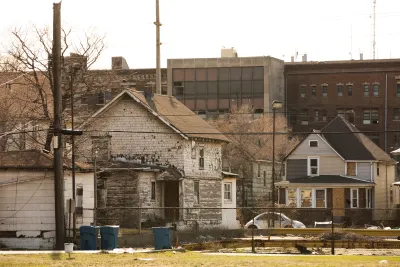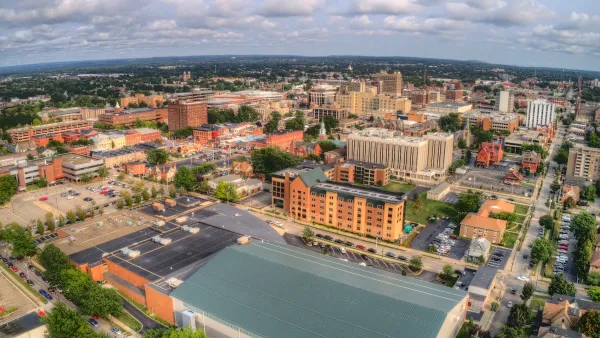As more evidence shows that neighborhood-level factors heavily impact future outcomes, place-based policies should use more accurate measurements to ensure persistently poor places don’t fall through the cracks.

A commentary in Route Fifty by August Benzow and Kenan Fikri describes how new research explains “how an economically distressed place can transmit poverty from one generation to the next.”
For the authors; it is important to point out that “Pioneering researchers like Harvard’s Raj Chetty have shown that children who grow up in high-poverty environments are less likely to climb the income ladder as adults,” contrary to the popular American narrative of bootstrap success.
For Benzow and Fikri, “the way we measure and target persistent poverty leaves millions of vulnerable Americans invisible to programs intended to support them.” This includes how places are designated as ‘chronically poor,’ which is currently done at the county level. “Looking no deeper severely underestimates the size of the problem and therefore the scope of the challenge. Roughly 20.5 million Americans live in a persistent-poverty county, but 35 million reside in a persistent-poverty census tract.”
The article concludes that “high poverty rates will persist across thousands of American communities because the fabric that weaves them into the national economy has grown threadbare.” The authors call for “a growth agenda for persistent-poverty communities—the very places where the nation’s social and economic challenges are greatest.”
FULL STORY: Will the new wave of place-based policy leave persistently poor areas behind?

Analysis: Cybertruck Fatality Rate Far Exceeds That of Ford Pinto
The Tesla Cybertruck was recalled seven times last year.

National Parks Layoffs Will Cause Communities to Lose Billions
Thousands of essential park workers were laid off this week, just before the busy spring break season.

Retro-silient?: America’s First “Eco-burb,” The Woodlands Turns 50
A master-planned community north of Houston offers lessons on green infrastructure and resilient design, but falls short of its founder’s lofty affordability and walkability goals.

Test News Post 1
This is a summary

Analysis: Cybertruck Fatality Rate Far Exceeds That of Ford Pinto
The Tesla Cybertruck was recalled seven times last year.

Test News Headline 46
Test for the image on the front page.
Urban Design for Planners 1: Software Tools
This six-course series explores essential urban design concepts using open source software and equips planners with the tools they need to participate fully in the urban design process.
Planning for Universal Design
Learn the tools for implementing Universal Design in planning regulations.
EMC Planning Group, Inc.
Planetizen
Planetizen
Mpact (formerly Rail~Volution)
Great Falls Development Authority, Inc.
HUDs Office of Policy Development and Research
NYU Wagner Graduate School of Public Service




























